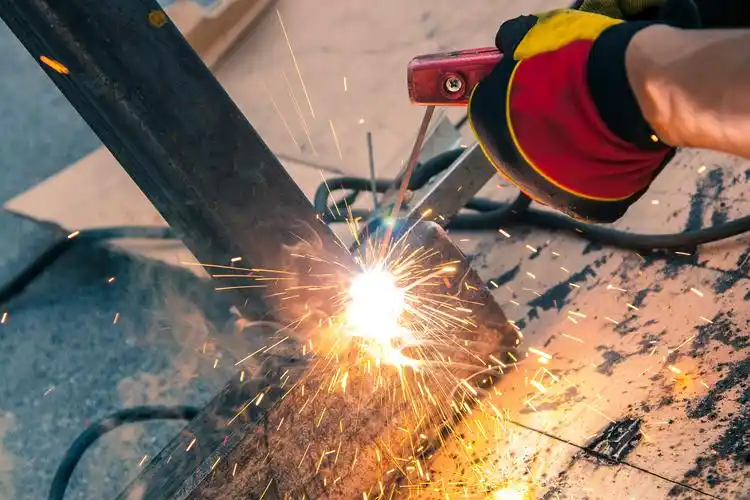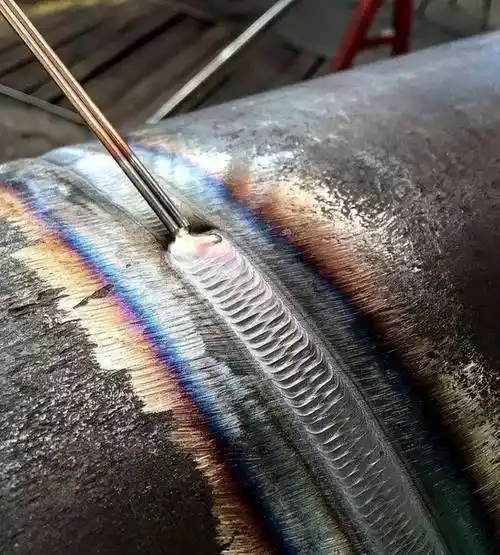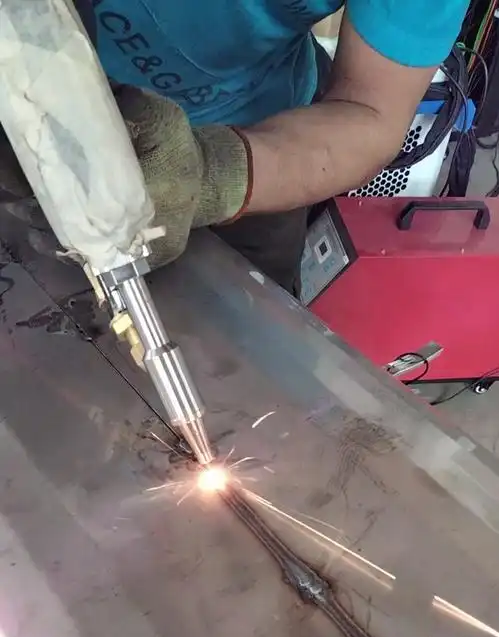Welding is a critical process in modern manufacturing, playing a key role in industries ranging from automotive and aerospace to electronics and medical devices. Among the various welding technologies, MIG (Metal Inert Gas) welding, TIG (Tungsten Inert Gas) welding, and Laser Beam Welding (LBW) are widely used due to their versatility and effectiveness. Despite all being metal joining techniques, they differ significantly in principle, equipment, process control, and application. Understanding these differences is essential for selecting the most suitable welding method for a given application.

Welding process
MIG Welding (Metal Inert Gas Welding)
Principle and Operation
MIG welding, also known as Gas Metal Arc Welding (GMAW), uses a consumable wire electrode that continuously melts to form the weld joint. The arc is struck between the electrode and the workpiece, generating heat that melts both the wire and base metal. An inert or semi-inert shielding gas—usually argon, CO₂, or a mixture—protects the molten weld pool from oxidation and contamination.
Key Features
Consumable electrode: The electrode melts and becomes part of the weld, simplifying filler material addition.
Arc welding heat source: Provides moderate heat input, suitable for a wide range of thicknesses.
Efficiency: Can achieve high deposition rates and is well-suited for large-scale production.
Ease of learning: Relatively simple operation; less skill required compared to TIG.
Applications
MIG welding is commonly used in thick steel plate welding, automotive body assembly, structural steel fabrication, and general manufacturing where speed and efficiency are prioritized.
Limitations
Moderate precision: Heat-affected zone (HAZ) is larger than TIG or laser welding.
Not ideal for very thin materials due to risk of burn-through.
TIG Welding (Tungsten Inert Gas Welding)
Principle and Operation
TIG welding, also known as Gas Tungsten Arc Welding (GTAW), uses a non-consumable tungsten electrode to produce the arc. The heat melts the base metal, and filler metal is added manually or automatically if needed. An inert gas, typically argon or helium, shields the weld area. Unlike MIG welding, the electrode does not melt, providing greater control and precision.
Key Features
Non-consumable tungsten electrode: High melting point allows stable arc control.
Flexible polarity: DCEN (direct current electrode negative) for steels, AC (alternating current) for aluminum and magnesium.
Precision: Produces a smaller heat-affected zone and minimal distortion, suitable for thin or delicate components.
High-quality welds: Excellent for critical applications, cosmetic finishes, and corrosion-resistant joints.

TIG Welding
Applications
TIG welding is widely used in aerospace, automotive, stainless steel fabrication, aluminum structures, pressure vessels, and medical devices. It is ideal for projects where precision and weld quality are paramount.
Limitations
Slower than MIG welding due to manual control and lower deposition rates.
Equipment and operation cost higher: tungsten electrodes and inert gases are more expensive.
Requires skilled operators to achieve consistent results.
Laser Beam Welding (LBW)
Principle and Operation
Laser Beam Welding uses a high-energy, focused laser beam as the heat source. The concentrated energy rapidly melts the base material, forming a weld with minimal heat-affected zone. LBW is a non-contact process, reducing mechanical stress and enabling welding of complex geometries.
Key Features
High energy density: Enables deep penetration and narrow welds.
Minimal thermal distortion: Heat is confined to a small area, reducing residual stress.
Automation-ready: Compatible with robotic systems for high-volume, repeatable production.
Optional filler: Some LBW applications can use wire feed, but many are autogenous (no filler).
Typical Processes
Conduction mode: Low-power, shallow welds, suitable for electronics or thin materials.
Keyhole mode: High-power, deep penetration, used for automotive panels, aerospace components, and thick plate structures.
Applications
LBW is increasingly used in automotive manufacturing, aerospace, electronics, medical devices, and precision engineering, particularly where accuracy, speed, and consistency are critical.
Limitations
Higher equipment cost compared to MIG and TIG.
Requires precise control and safety precautions due to high-power laser beams.

Handled Laser Welding Process
Comparative Analysis
| Feature | MIG | TIG | Laser Welding |
| Electrode | Consumable wire | Tungsten (non-consumable) | None (optional wire feed) |
| Shielding Gas | Argon, CO₂, mixture | Argon, Helium | Argon, Nitrogen, Helium |
| Heat Source | Arc | Arc | Laser beam |
| Precision | Moderate | High | Very high |
| Heat-Affected Zone | Moderate | Small | Minimal |
| Automation | Moderate | Low | High |
| Typical Applications | Thick metals, high-volume production | Thin metals, critical welds | Precision parts, complex geometries, automated production |
| Cost | Low-medium | Medium-high | High initial, low operational |
MIG: Fast, cost-effective, high deposition, moderate precision.
TIG: Highly precise, minimal distortion, suited for thin materials and critical welds.
Laser Welding: Extremely precise, minimal heat impact, ideal for automation, high-volume, and complex components.
Choosing the right welding technology depends on material thickness, required precision, production volume, and budget. In many modern manufacturing environments, LBW is increasingly preferred for precision and automation, while MIG and TIG remain essential for versatility, cost-efficiency, and specific material applications.
If you are unsure which type of welding is best for your project, please feel free to contact ZS Laser. We offer free sample welding testing, CE certification, and various types of laser welding machines. We look forward to your consultation
 ZS Laser Equipment
ZS Laser Equipment


WhatsApp
Scan the QR Code to start a WhatsApp chat with us.